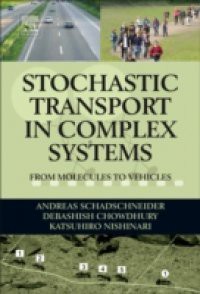The first part of the book provides a pedagogical introduction to the physics of complex systems driven far from equilibrium. In this part we discuss the basic concepts and theoretical techniques which are commonly used to study classical stochastic transport in systems of interacting driven particles. The analytical techniques include mean-field theories, matrix product ansatz, renormalization group, etc. and the numerical methods are mostly based on computer simulations. In the second part of the book these concepts and techniques are applied not only to vehicular traffic but also to transport and traffic-like phenomena in living systems ranging from collective movements of social insects (for example, ants) on trails to intracellular molecular motor transport. These demonstrate the conceptual unity of the fundamental principles underlying the apparent diversity of the systems and the utility of the theoretical toolbox of non-equilibrium statistical mechanics in interdisciplinary research far beyond the traditional disciplinary boundaries of physics.* Leading industry experts provide a broad overview of the interdisciplinary nature of physics* Presents unified descriptions of intracellular, ant, and vehicular traffic from a physics point of view* Applies theoretical methods in practical everyday situations* Reference and guide for physicists, engineers and graduate students

